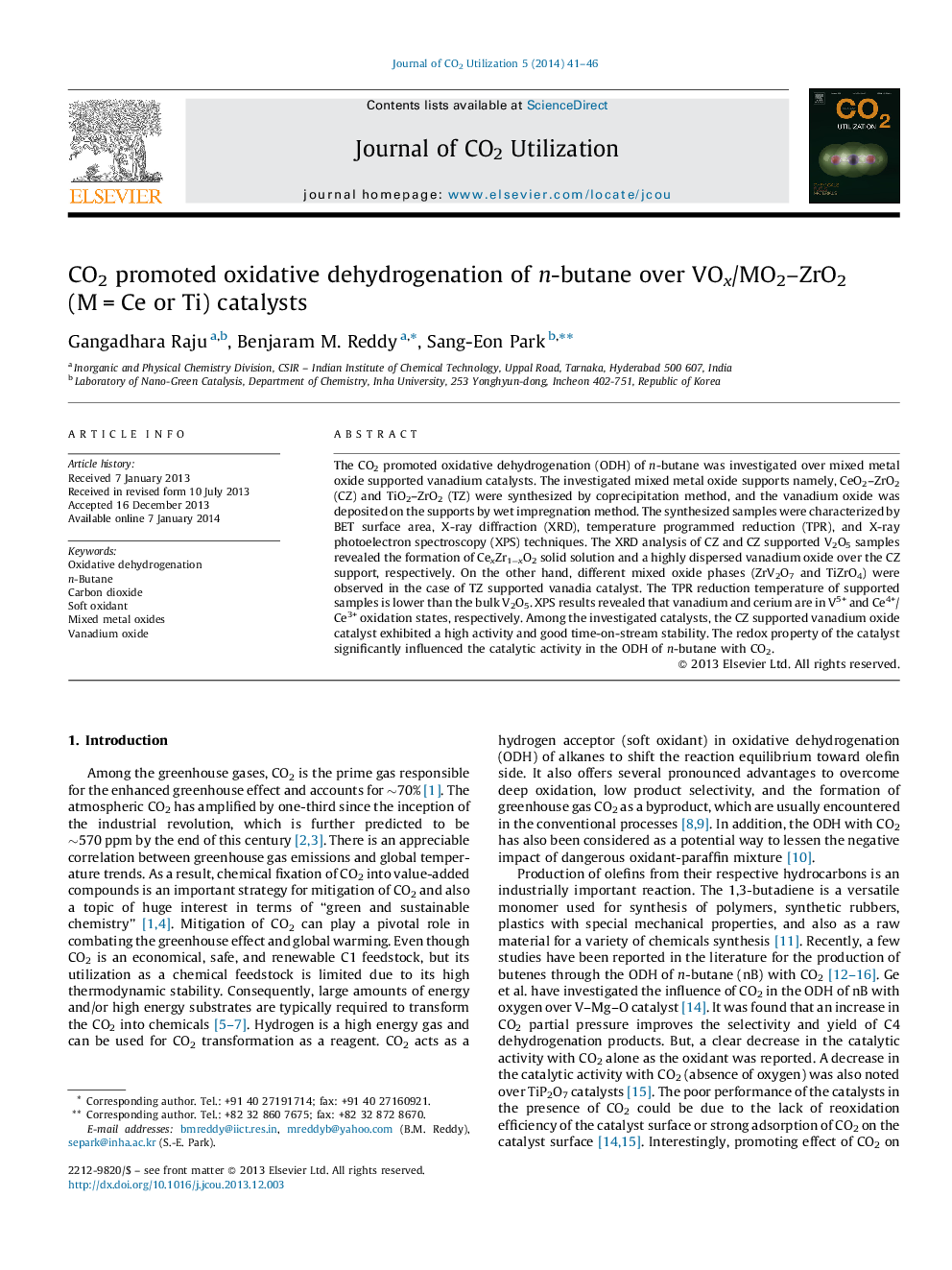| Article ID | Journal | Published Year | Pages | File Type |
|---|---|---|---|---|
| 63592 | Journal of CO2 Utilization | 2014 | 6 Pages |
•CO2 is employed as a soft oxidant for oxidative dehydrogenation of n-butane.•VOx/CeO2–ZrO2 catalyst showed a high conversion and product selectivity.•The high activity is due to the redox nature of the catalyst.•A proper support with vanadium oxide is suitable for this reaction.
The CO2 promoted oxidative dehydrogenation (ODH) of n-butane was investigated over mixed metal oxide supported vanadium catalysts. The investigated mixed metal oxide supports namely, CeO2–ZrO2 (CZ) and TiO2–ZrO2 (TZ) were synthesized by coprecipitation method, and the vanadium oxide was deposited on the supports by wet impregnation method. The synthesized samples were characterized by BET surface area, X-ray diffraction (XRD), temperature programmed reduction (TPR), and X-ray photoelectron spectroscopy (XPS) techniques. The XRD analysis of CZ and CZ supported V2O5 samples revealed the formation of CexZr1−xO2 solid solution and a highly dispersed vanadium oxide over the CZ support, respectively. On the other hand, different mixed oxide phases (ZrV2O7 and TiZrO4) were observed in the case of TZ supported vanadia catalyst. The TPR reduction temperature of supported samples is lower than the bulk V2O5. XPS results revealed that vanadium and cerium are in V5+ and Ce4+/Ce3+ oxidation states, respectively. Among the investigated catalysts, the CZ supported vanadium oxide catalyst exhibited a high activity and good time-on-stream stability. The redox property of the catalyst significantly influenced the catalytic activity in the ODH of n-butane with CO2.
Graphical abstractFigure optionsDownload full-size imageDownload as PowerPoint slide
